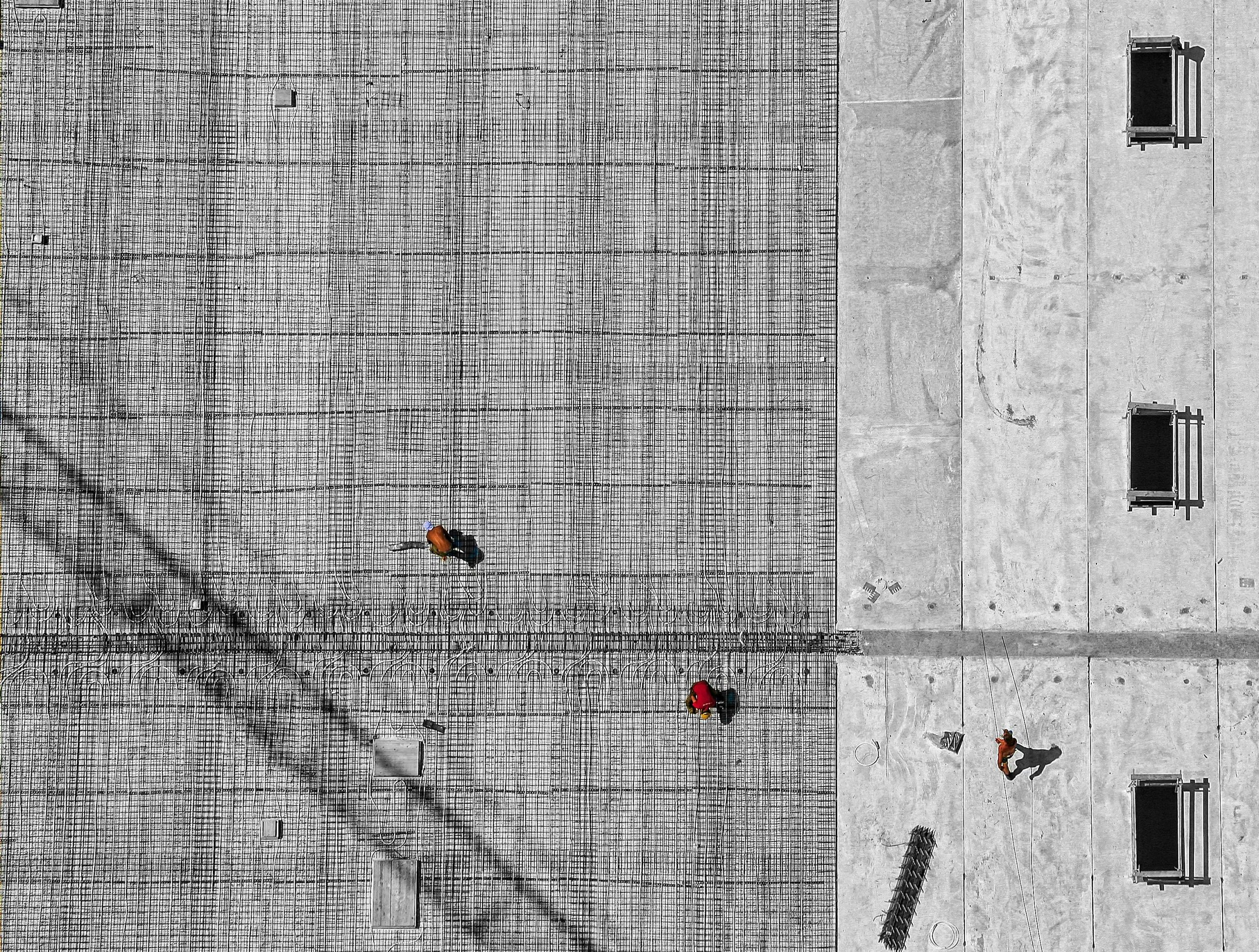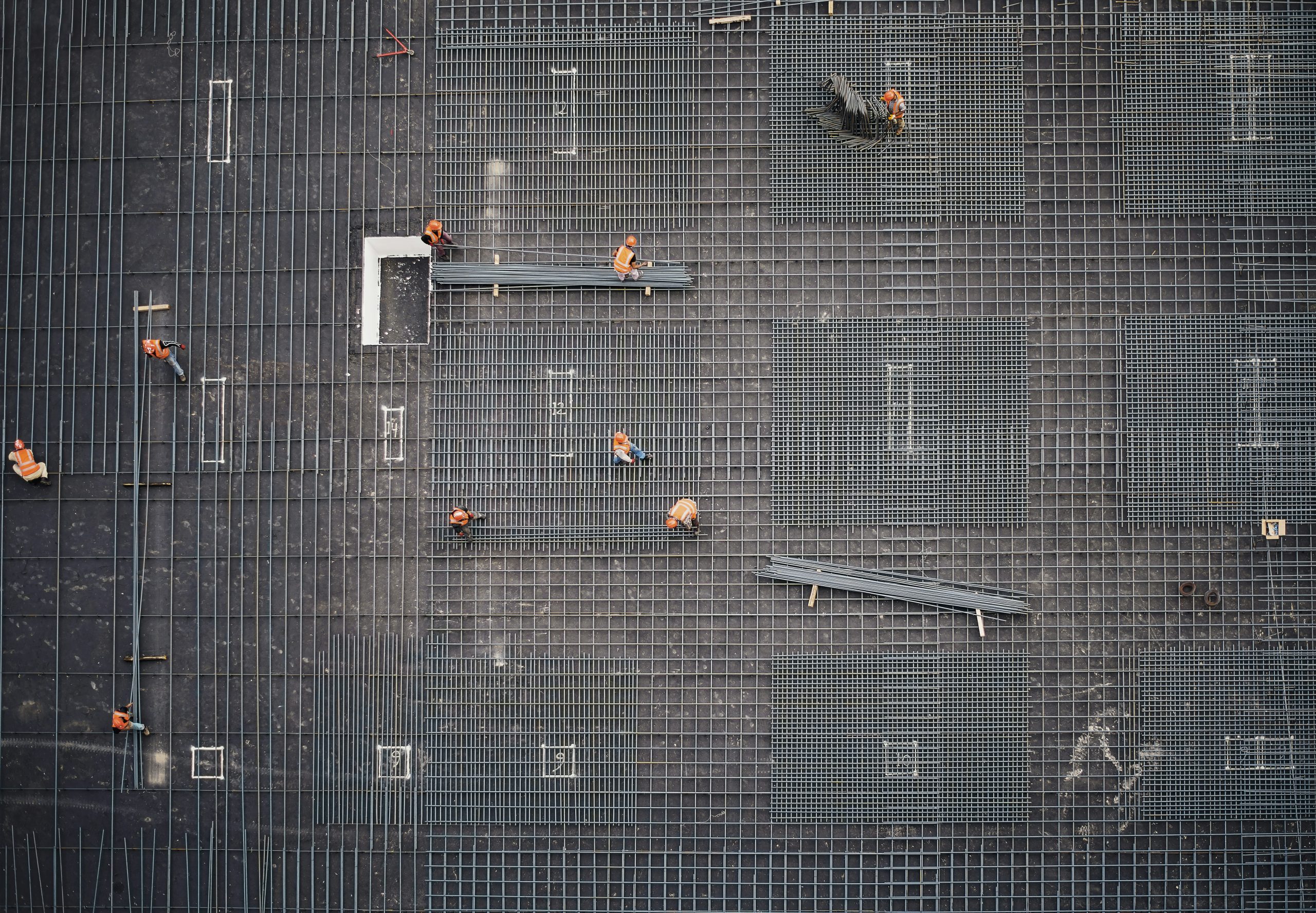In our journey towards a more sustainable future, modular construction stands out as a game-changer in architecture. By leveraging prefabricated modules, we reduce waste, save time, and enhance energy efficiency. This method not only minimizes our environmental footprint but also promotes flexibility and adaptability in building design. As we delve deeper into the advantages of modular construction in sustainable architecture, we’ll discover how this innovative approach is transforming the way we build our communities and care for our planet. Have you ever wondered how we can make our buildings more environmentally friendly and efficient? That’s where modular construction steps in as a game-changer in the realm of sustainable architecture.

What is Modular Construction?
Modular construction refers to the process where buildings are made from sections, or modules, built off-site in a controlled factory environment. These modules are then transported to the construction site and assembled into a single structure. This approach contrasts with traditional construction, where the entire building is erected on-site from scratch.
Defining Sustainable Architecture
Sustainable architecture aims to minimize a building’s negative impact on the environment through energy efficiency, sustainable materials, and innovative designs. Essentially, it’s about creating buildings that harmonize with nature rather than exploit it. Modular construction and sustainable architecture make for a powerful combination that addresses environmental and economic concerns effectively.
The Environmental Advantages
When we talk about sustainable architecture, the environmental benefits of modular construction are front and center. Let’s dig into the ecological advantages that come with this innovative building method.
Reduced Waste
In factory settings, materials can be cut more precisely, and excess can be reused, significantly reducing the overall waste. Traditional construction often leads to a lot of material leftovers, which typically end up in landfills. With modular construction, waste materials are more likely to be recycled or reused, promoting a more sustainable approach to building.
Lower Energy Consumption
Energy efficiency is another significant advantage. Because modules are built in a controlled environment, there’s a reduction in energy use during construction. Factories can use advanced machinery and optimized processes to minimize energy consumption, resulting in fewer greenhouse gas emissions.
Minimal Site Disturbance
Constructing modules off-site means that there’s much less activity at the actual building location. This equates to reduced soil erosion, lower air and noise pollution, and minimal disruption to the local ecosystem. The fewer trucks and heavy machinery needed on site, the better it is for the environment.
Enhanced Insulation
Modular units are often better insulated than traditionally built structures. Factories can integrate high-quality insulation materials into the modules, ensuring energy efficiency from the get-go. This results in buildings that require less energy for heating and cooling, which helps in reducing the carbon footprint.
Use of Sustainable Materials
Factories that specialize in modular construction are more likely to stock eco-friendly materials. This includes sustainably sourced wood, recycled steel, and low-VOC (volatile organic compounds) paints and finishes. These materials are not only better for the environment but also contribute to healthier indoor air quality for occupants.
Economic Advantages
While the environmental benefits are crucial, we shouldn’t overlook the economic gains offered by modular construction. These advantages make it a compelling choice for developers, architects, and homeowners alike.
Cost Savings
Modular construction can be less expensive than traditional methods. Because modules are built in bulk in a factory setting, manufacturers can purchase materials in larger quantities at a lower cost. Additionally, the efficient use of materials and labor reduces overall expenses.
Faster Construction Times
Time is money, and modular construction saves a lot of it. Building modules in a factory and then transporting them to the site can be done simultaneously with site preparation. This parallel process accelerates the entire construction timeline, allowing buildings to be completed months faster than traditional methods.
Reduced Labor Costs
Since much of the work is done in a factory setting, the need for skilled labor on-site is reduced. This cuts down the costs associated with hiring specialized workers and can lead to fewer delays caused by labor shortages or inclement weather conditions.
Increased Predictability
Modular construction offers a higher degree of predictability. Factors such as weather delays, labor shortages, and material supply issues that plague traditional construction methods are significantly minimized. This makes budgeting and scheduling more accurate and less risky.
Long-Term Savings
Quality control in a factory setting ensures that modules are built to precise standards, resulting in fewer defects and issues down the line. This leads to lower maintenance and repair costs over the building’s lifespan, providing long-term economic benefits.
Social Advantages
Advantages aren’t limited to just environmental and economic spheres. Modular construction also brings several social benefits to the table, making it a holistic approach to sustainable architecture.
Community Revitalization
Modular construction can be especially beneficial in community revitalization projects. By providing affordable and quickly deployable housing options, modular units can help revive struggling neighborhoods more efficiently than traditional methods.
Safer Construction Sites
With much of the work done off-site, the number of workers on the construction site is significantly reduced, lessening the chances for on-site accidents. Factory environments adhere to stringent safety protocols, making them safer for workers.
Better Working Conditions
Modular factories offer a more controlled and stable working environment compared to on-site construction, which is subject to varying weather conditions and seasonal changes. This stability can result in healthier, more satisfied workers.
Flexible Housing Solutions
Modular construction allows for greater flexibility in housing solutions. Units can be added or removed as required, making it easier to adapt to changing community needs. This is particularly useful in emergency situations where rapid deployment of shelters or medical facilities is necessary.
Enhanced Access to Housing
Because modular construction can be more affordable, it opens up more opportunities for people who might otherwise be priced out of the housing market. This can lead to broader social equity, allowing more individuals and families to own homes or access quality living spaces.

Technical Advantages
Understanding the technical merits of modular construction is essential when considering its role in sustainable architecture. Let’s break down how its technical attributes set it apart from traditional methods.
Quality Control
Modules are built in a tightly controlled factory environment under strict quality controls. Every aspect of the construction is monitored, from material quality to adherence to design specifications. This results in consistently higher quality and durability compared to on-site construction.
Building Codes and Standards
Modular buildings are constructed to meet or exceed the same building codes and standards as traditional buildings. Furthermore, because of rigorous factory quality control, these structures often surpass those standards, resulting in safer, more reliable buildings.
Technological Integration
New technologies are readily integrated into modular construction. Smart home systems, energy-efficient HVAC systems, and advanced insulation methods can all be incorporated at the factory stage, ensuring that each module is modern and up-to-date.
Repeatability and Scalability
One of the significant advantages of modular construction is its repeatability and scalability. Once a module design has been perfected, it can be replicated multiple times, ensuring consistent quality across all units. This is particularly beneficial for large-scale projects such as housing complexes or office buildings.
Adaptability
Modular construction offers great adaptability and flexibility. Modules can be reconfigured, expanded, or reduced depending on future needs. This is a significant advantage in a world where requirements can change rapidly.
Technical and Functional Durability
Due to the controlled construction environment and robust quality control, modular buildings often exhibit higher technical durability. This means fewer repairs, less wear and tear, and a longer lifespan compared to traditionally constructed buildings.
Resilience and Disaster Response
Another dimension where modular construction shines is in its ability to respond to disasters and create resilient structures. Here’s how it stands out in this critical aspect.
Rapid Deployment
After natural disasters or emergencies, quick shelter and infrastructure solutions are necessary. Modular buildings can be rapidly deployed to affected areas, providing instant shelters, clinics, or even schools. This rapid deployment capability can be a lifesaver during times of need.
Robustness and Strength
Modules are built to endure transportation and craning onto foundations, making them inherently stronger and more robust than traditional structures. This strength makes them better suited for harsh conditions and more resilient during natural disasters.
Reusability
Modular units can be disassembled, transported, and reassembled either at the same location or a different one. This reusability is advantageous in disaster-response scenarios where temporary structures may need to be relocated or repurposed.
Sustainable Recovery
Using modular units for disaster recovery aligns with sustainable practices. These units are often constructed with eco-friendly materials and designed to be energy-efficient, ensuring that recovery efforts do not come at the expense of the environment.

Case Studies and Real-World Applications
To bring the advantages of modular construction in sustainable architecture to life, let’s look at some real-world applications and case studies that highlight its effectiveness.
Case Study 1: A Modular Eco-Friendly Apartment Complex
In a bustling urban area, an eco-friendly apartment complex was constructed using modular methods. Each unit was designed to maximize natural light and ventilation, and solar panels were installed on the roofs. The project saw:
- 50% reduction in construction time compared to traditional methods
- 20% cost savings due to efficient material use
- 30% lower energy consumption thanks to superior insulation and renewable energy sources
Case Study 2: Modular Clinics in Rural Areas
In rural regions lacking adequate healthcare facilities, modular clinics were deployed to provide much-needed medical services. These clinics utilized sustainable materials and energy-efficient systems. Results included:
- Rapid setup within weeks rather than months
- Enhanced patient care due to modern amenities and equipment
- Reduced environmental impact, blending seamlessly with the natural surroundings
Case Study 3: Post-Disaster Housing Solutions
After a devastating hurricane, modular homes were quickly sent to the affected area to provide immediate shelter for displaced families. The project showcased:
- Speed of deployment, offering shelters within days
- Robust construction that could withstand future severe weather
- Sustainable materials usage, contributing to a greener recovery
Case Study 4: Green Office Spaces
A tech company decided to build its new office using modular construction to emphasize its commitment to sustainability. The office complex included green roofs, rainwater harvesting systems, and energy-efficient climate control. Key benefits included:
- Improved employee satisfaction due to a healthier work environment
- Reduction in operational costs owing to energy savings
- Positive brand image as a leader in sustainable practices
Future Trends in Modular Construction and Sustainable Architecture
The future looks promising for modular construction, especially as we move towards more sustainable architecture practices. Here are some future trends to keep an eye on:
Integration of Smart Technologies
The future of modular construction involves integrating smart technologies from the outset. From IoT-enabled devices to AI-driven energy management systems, future modular buildings are expected to be smarter and more efficient.
Advanced Sustainable Materials
Research into new, more sustainable building materials continues to advance. Expect to see more modular units constructed from recycled materials, bamboo, hempcrete, or other eco-friendly options.
Increased Customization
Moving forward, there will likely be even greater customization in modular construction. With advancements in digital design tools, customers can personalize their modules to suit unique needs and preferences while maintaining sustainability.
Wider Adoption in Various Sectors
Modular construction is expected to penetrate more sectors, from education and healthcare to hospitality and retail. As its benefits become more widely recognized, adoption will increase, driving industry innovation further.
Increased Government Support
With growing awareness of climate change, governments are likely to offer more incentives and support for sustainable construction practices, including modular construction. This could take the form of tax benefits, grants, or streamlined regulations.
Urbanization and Modular High-Rises
As urbanization continues, modular high-rises are becoming a viable solution. Advances in engineering and materials science will make it possible to construct taller buildings using modular methods, addressing housing shortages in densely populated areas.
Counterarguments and Challenges
While modular construction has numerous advantages, it’s essential to acknowledge potential counterarguments and challenges. Understanding these can help us address them proactively to maximize the benefits.
Perception of Quality
Some people still carry the misconception that modular buildings are of lower quality compared to traditional structures. Education and evidence-based case studies can help alter this perception.
Transportation Limitations
Transporting large modules can be challenging, especially to remote or difficult-to-access areas. Innovations in modular design and logistics are essential to overcome this hurdle.
Initial Costs
While modular construction can be cost-effective in the long run, the initial setup costs for factories and specialized machinery can be high. However, as the industry grows, these costs are likely to come down.
Design Limitations
When it comes to highly customized architectural designs, modular construction can sometimes fall short. However, advances in digital design and manufacturing technologies are making it easier to create bespoke modular designs.
Regulatory Barriers
Building codes and regulations can vary significantly from one region to another, posing challenges for modular construction. Advocacy and collaboration with regulatory bodies are necessary to harmonize standards and streamline approval processes.
Conclusion
Modular construction offers a myriad of advantages when it comes to sustainable architecture. From significant environmental benefits like reduced waste and lower energy consumption to economic gains such as cost savings and faster construction times, this innovative method is paving the way for a more sustainable future. Additionally, it brings substantial social and technical advantages, making it a robust and versatile option for various applications.
Despite some challenges, the future of modular construction looks promising as technological advancements and industry acceptance continue to grow. By overcoming these obstacles and leveraging the strengths of modular construction, we can build more sustainable, efficient, and resilient structures that meet the needs of our time.
So, the next time you think about the future of building, consider the sustainable and innovative potential of modular construction. It’s not just about building smarter; it’s about building better for us and for the planet.



